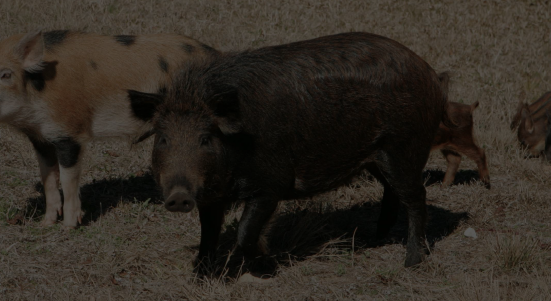
Invasive Species | Terrestrial Wildlife and Pathogens
Wild Pigs
Photo: US Fish and Wildlife Service
Wild Pigs
(Sus scrofa)
French common name: Les porcs ou cochons sauvages
Wild Pigs are not native to the Americas, and can have severe impacts on sensitive environments by trampling plants and disturbing soil, which can allow for more invasive species to establish. This invasive species can reproduce rapidly and adapt to many different types of environments, allowing them to outcompete native species for food and habitat. Wild Pigs can also damage agricultural land and resources, and are costly to control.
Characteristics
Coloration: There may be many different color variations of wild pigs, from very dark to a light brown and may have spots. Piglets are usually lighter in color and may be spotted or striped.
Size: Adult pigs weigh in from 70-100kg with males weighing more than females.
Reproduction: Rapid reproduction with 2 litters a year with an average of 4-10 piglets a litter.
Habitat: Forests, Meadows, Agricultural areas, Riparian areas, etc…
Jorg Hempel
Key ID Features
Magnus Johansson
Stripes on young pig
Richard Bartz
Elongated snout compared to domestic pig




